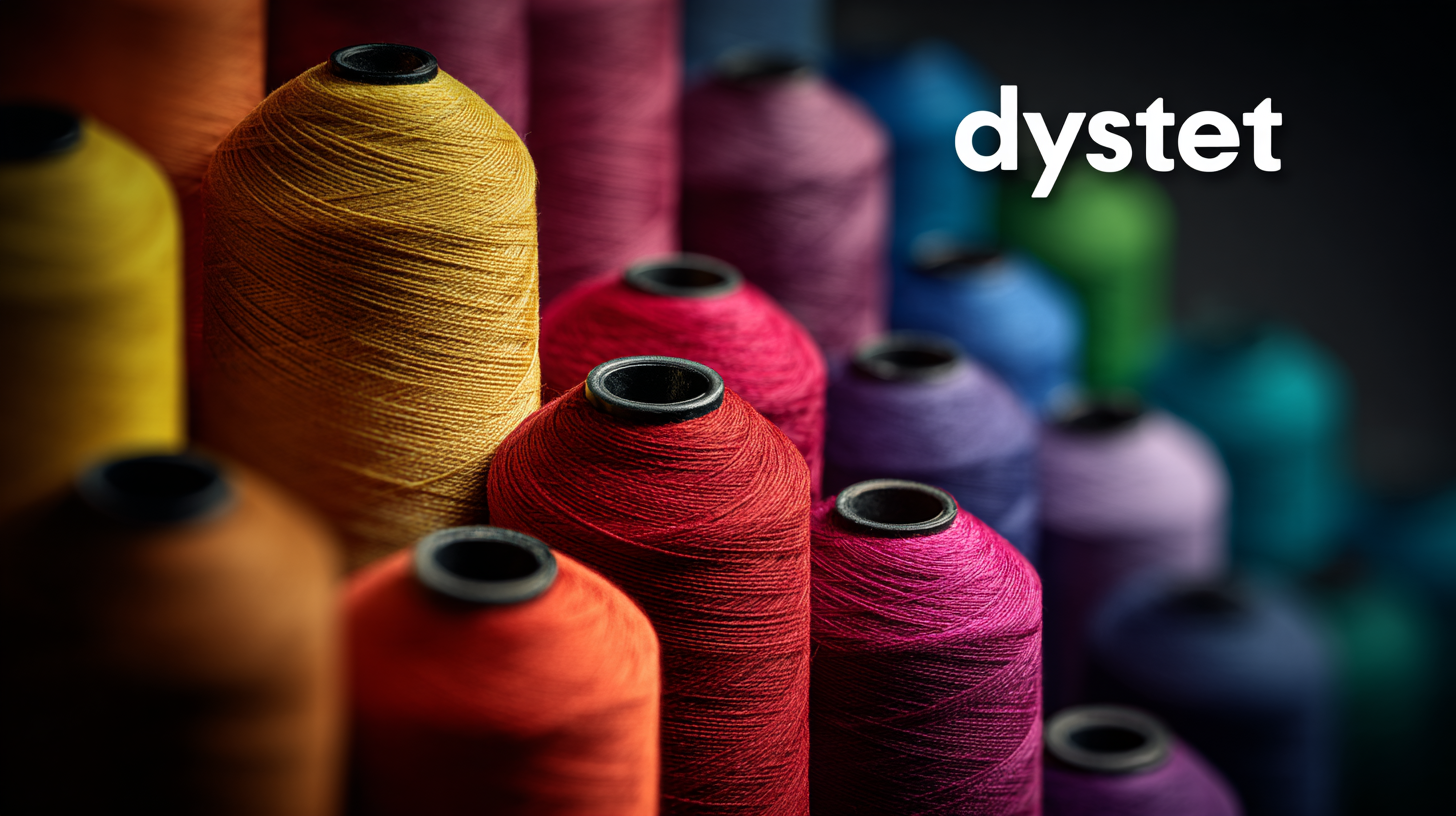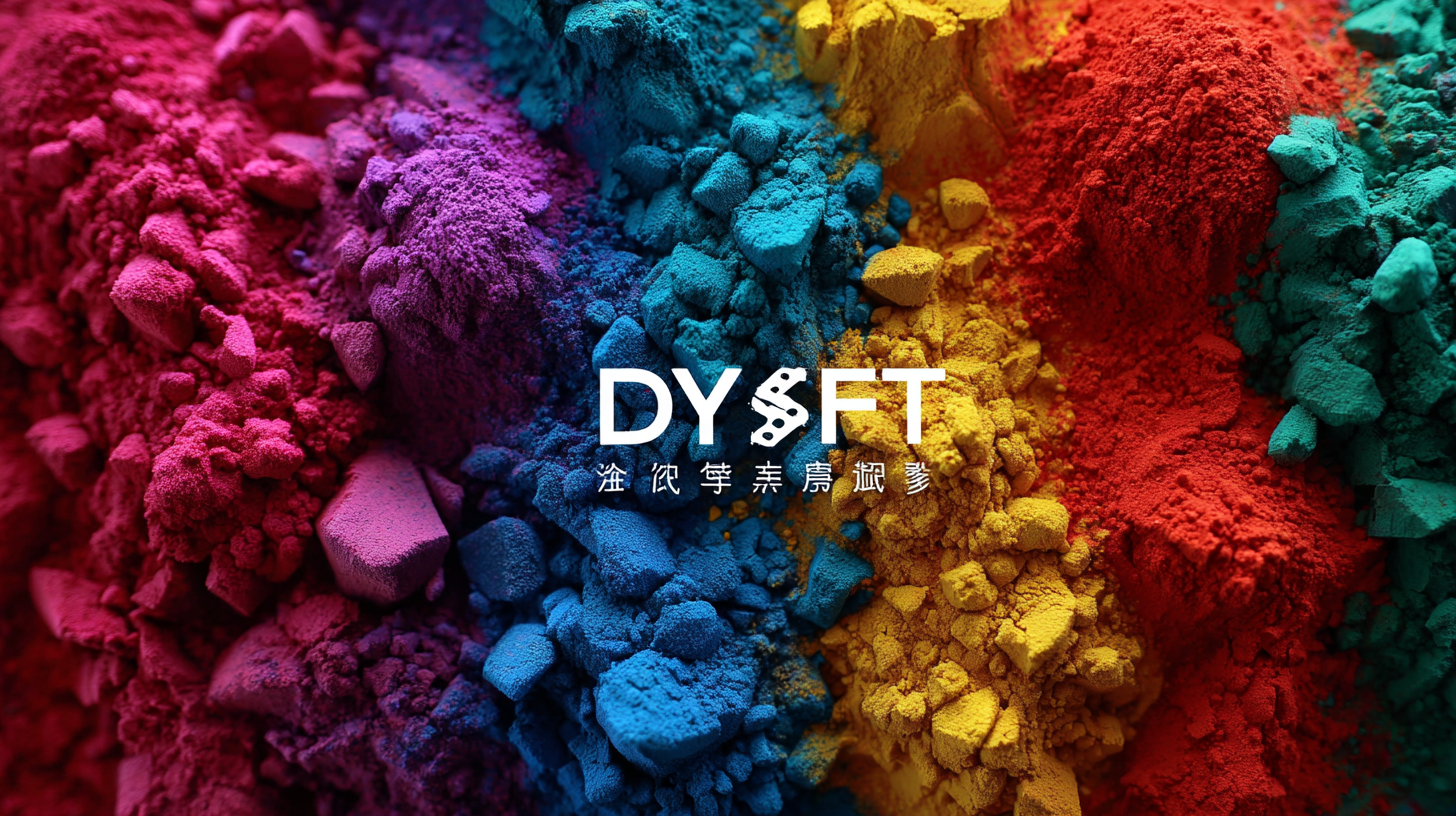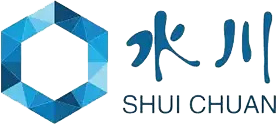The Dyestuff Industry in China has emerged as a powerhouse, setting benchmarks in quality and innovation that resonate globally. According to a report by Mordor Intelligence, the global dyestuff market is projected to reach USD 8.5 billion by 2026, with Asia-Pacific being the leading region due to its significant production capabilities. In this thriving landscape, China's contributions cannot be overstated, as the country accounts for over 50% of the world's synthetic dye production. This dominance stems from a combination of advanced manufacturing techniques, stringent quality control measures, and a commitment to sustainable practices. As the demand for high-quality dyes in textiles, cosmetics, and other applications continues to rise, China's dyestuff producers are not only meeting domestic needs but also gaining respect and recognition in international markets, reinforcing their position as key players in an ever-evolving industry.

Quality control issues have become a significant challenge for China's dyestuff industry, impacting its global reputation. According to a recent report by the China Dyestuff Industry Association, approximately 30% of domestic manufacturers struggle to meet international quality standards. This discrepancy not only hinders exports but also diminishes customer trust. The increasing demand for eco-friendly and sustainable dyes further complicates the scenario, as many factories are ill-equipped to adapt their production processes to greener practices.
To navigate these challenges, companies must prioritize rigorous quality assurance protocols. Tip: Regular audits and compliance checks can help identify potential gaps in production quality. Additionally, investing in advanced technologies such as automated analytics can enhance the precision of quality assessments.
Moreover, the lack of skilled professionals in quality control is another pressing issue. The sustainability of China's dyestuff industry hinges upon developing a robust workforce that can oversee stringent quality measures. Tip: Establishing partnerships with educational institutions can cultivate a more knowledgeable talent pool equipped to address contemporary industry challenges. By focusing on quality control, China's dyestuff manufacturers can enhance their standing in the global market and meet the evolving demands of consumers.
The dyestuff industry in China has made significant strides in both quality and sustainability, yet it still faces considerable environmental challenges. According to a report by the China Dyestuff Industry Association, the production of dyestuffs contributes to approximately
10% of the country’s total industrial wastewater discharge. This alarming statistic underscores the urgent need for sustainable practices within the sector.
Recent studies show that around
60% of dyestuff manufacturers in China have started to adopt greener production technologies, leading to a reduction in harmful effluents. However, the industry still grapples with the legacy of pollution, with the total emissions of
volatile organic compounds (VOCs) estimated to reach
1.5 million tons annually. The government's initiatives to improve regulatory frameworks and promote eco-friendly practices are vital in mitigating the environmental impact while ensuring the industry continues to earn global respect for its quality products.
Furthermore, investments in research and development for biodegradable dyestuffs are on the rise, driven by both consumer demand and regulatory pressure. The market for
eco-friendly dyes is projected to grow by
12% annually, indicating a promising shift towards sustainability in the dyestuff production landscape. As manufacturers increasingly embrace these changes, the balance between
economic growth and environmental responsibility will be crucial for the industry's future.
The dyestuff industry in China stands at the forefront of global textile production, celebrated for its meticulous craftsmanship and high-quality products. However, the industry faces a pressing challenge: a significant skill gap among the labor market. As demand for innovative and sustainable dyeing techniques increases, many companies struggle to find skilled professionals who can meet these new technological and environmental standards.
This skills shortage not only hampers productivity but also affects the industry's overall ability to thrive in a competitive global environment. The rapid development of new dye technologies and eco-friendly practices necessitates a workforce that is adept at both traditional methods and modern innovations. As firms seek to improve their operational capabilities, investing in training programs and educational partnerships becomes essential. By addressing these skills gaps through strategic initiatives, China's dyestuff industry can fortify its reputation and maintain its status as a leader in the global market.
The global dyestuff industry is witnessing a dynamic shift, with Chinese companies increasingly asserting their presence on the international stage. According to a report by Research and Markets, the global synthetic dye market was valued at approximately $11.6 billion in 2022 and is projected to grow at a CAGR of 4.5% through 2028. As the largest producer of dyestuffs in the world, China commands around 40% of the market share, highlighting its crucial role in meeting global demand.

Chinese dyestuff companies excel not only in quantity but also in quality. A survey by the China Dyestuff Industry Association indicates that the country's compliance with global environmental standards has improved remarkably, with over 75% of manufacturers now adhering to ISO 14001 certification. Additionally, the introduction of advanced production technologies has enabled Chinese firms to enhance the performance and sustainability of their products, allowing them to compete effectively against established Western players. As these companies continue to innovate and invest in eco-friendly products, their global competitiveness is set to strengthen, solidifying China's reputation as a leader in the dyestuff industry.
Sustainability has become a cornerstone of the dyestuff industry in China, as manufacturers strive to meet both domestic and international environmental standards. According to the China Dyestuff Industry Association, the sector has seen an impressive 30% reduction in water consumption per ton of dyestuff produced over the past five years. This achievement is primarily due to the adoption of advanced, water-efficient technologies and the enforcement of strict regulations aimed at minimizing environmental impact.

Moreover, many companies are now prioritizing the use of eco-friendly raw materials, with a recent report highlighting that over 40% of dyestuff manufacturers have transitioned to using bio-based dyes, which significantly lower the carbon footprint compared to traditional chemical dyes. Collaborative efforts with government initiatives have also propelled innovation in waste management practices, resulting in a 25% decrease in hazardous waste generated by the industry. These combined efforts not only enhance the sustainability of the dyestuff manufacturing process but also position China as a respected player in the global market for quality, eco-conscious products.
